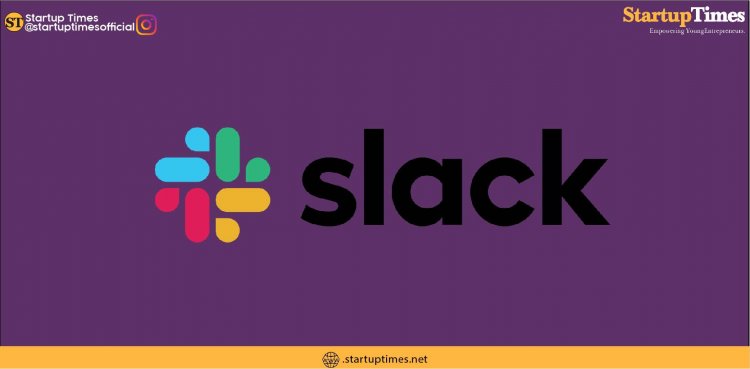How does Slack handles 1 BILLION Messages weekly
There’s plenty to love about Slack. You can message colleagues and partners concisely, whether you’re chatting in real-time or asynchronously. Slack is more spirited than many other forms of business communication, too.

Slack which provides a messaging platform that integrates with and unifies a wide range of communications services such as Twitter, Dropbox, Google Docs, Jira, GitHub, MailChimp, Trello, and Integration of many social media inside one- roof, isn’t it great?
So yes coming on the point what else you can do on the new fancy Chatrooms provided by Slack!
Your Slack workspace
A Slack workspace is made up of channels, where team members can communicate and work together. Keep reading to learn about four key features of Slack.
Organized conversations
In Slack, team members send messages and share files in channels. Create channels for teams, projects, office locations or anything else that’s relevant to your organization.
Searchable history
You can search your team’s conversation history in Slack to find relevant messages, files, channels and people. With Slack’s searchable history, conversations can become common institutional knowledge.
Connected apps
Add apps to your workspace to connect services or tools that you’re already using to Slack. With the right apps installed, you can do your work without ever leaving your Slack workspace.
Slack calls
You can start a voice or video call with any other members of your workspace right from Slack. Share your screen to show your teammates exactly what you see on your computer — you can even draw on your screen while you’re screen sharing.
And MUCH MORE THINGS!
THE NEED OF CLOUD SERVICES
“The realities of physical space, hardware acquisition, replacement parts, running a server facility with all its costs — all the physical manifestations that can lead to breakages — made a traditional IT environment impractical for an Internet startup,” says Richard Crowley, Slack’s director of operations. “Plus we would have needed an extra layer of expertise just to run the infrastructure. We could have operated with that kind of IT infrastructure, but the cost and complexity would have made it much harder to launch the business.”
ALL these complexities lead them to use Cloud services of AWS Cloud. But now the question arises
WHY AWS CLOUD
Using AWS as its IT infrastructure has helped Slack achieve an astonishing growth rate and a multibillion-dollar valuation with a platform that supports the speed of innovation and responsiveness, reliability, and security features to ensure the confidentiality of customer information.
The ease of provisioning resources in the AWS cloud allows Slack to practice.
⚫ Disaster recovery scenarios, which is essential for assuring existing and prospective customers that their information will always be there, when and where they need it.
⚫ Slack is also saving money with the lower-cost Amazon EBS sc1 volumes, providing the requisite speed at approximately one-fourth the cost
⚫ AWS immediately addresses customers’ security concerns because AWS publishes service organization control (SOC) reports, which are based on third-party examinations evaluating how AWS achieves compliance controls and objectives.
NOW THE MAIN POINT COMES IS….
HOW SLACK USES AWS SERVICES?
Slack has a relatively simple IT architecture that is based on a broad range of AWS services,
⚫Using i2.xlarge Amazon Elastic Compute Cloud (Amazon EC2) instances for basic computing tasks
⚫ Amazon Simple Storage Service (Amazon S3) for users’ file uploads and static assets
⚫Elastic Load Balancing to balance workloads across Amazon EC2 instances.
⚫Slack uses Amazon Elastic Block Store (Amazon EBS) for nightly backups of MySQL instances running on Amazon EC2 i2s instances
◼The Amazon EBS volumes are attached to the instances and used as temporary storage before being sent to Amazon S3.
⚫ Slack replaced hundreds of terabytes of Amazon EBS gp2 volumes with lower-cost Amazon EBS sc1 volumes for database backups. Since the switch, the company continues to grow the data on its user base.
⚫For security, Slack uses Amazon Virtual Private Cloud (Amazon VPC) to control security groups and firewall rules and AWS Identity and Access Management (IAM) to control user credentials and roles. The company uses Amazon CloudTrail for monitoring logs related to Amazon EC2 instances, and Amazon Route 53 for DNS management.
Along with the AWS services, Slack is using the Redis data structure server, the Apache Solr search tool, the Squid caching proxy, and a MySQL database.
Wait i have one more thing for you
Let’s have a look at the IT INFRASTRUCTURE IN A GRAPHICAL WAY!
SO THAT'S ALL! IF YOU LIKE IT THEN GIVE AS MANY CLAPS AS YOU WANT!
Disclaimer: The opinions expressed within the content are solely the author's and do not reflect the opinions and beliefs of Startuptimes.













